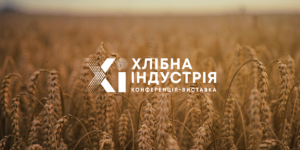

The All-Ukrainian Bakers Association and the Union of Millers of Ukraine in partnership with Agro Marketing Agency announce the Third National Forum “Bread Industry-2025” to be held in Uman on June 12-13, 2025. The general partner of the event is Lesaffre Ukraine. The quality control partner is SocTrade. Banquet partner is Bistro Pekarya Uman.
The conference is supported by the Ministry of Economy, Ministry of Agrarian Policy, Cherkasy Regional State Administration and Ukrainian Business Council.
Venue: Uman National University of Horticulture (1 Instytutska St., Uman, Cherkasy region).
ABOUT THE CONFERENCE
The Forum “Bread Industry – 2025” is a key event in the Ukrainian bakery market, bringing together more than 220 participants, including leading bread and bakery producers, investors, food industry, retail and distribution specialists, scientists and government officials. The event is accompanied by a parallel exhibition of equipment for grain processing, flour production, bakery products, packaging, energy, etc.
CONFERENCE AUDIENCE
Managers and owners of bakeries, confectioneries and bakeries, producers of flour, flour products, cereals, pasta and other grain processing companies; retailers, suppliers of packaging, raw materials, ingredients, equipment and technologies, government officials and other participants of the agro-industrial and related sectors.
MAIN AREAS OF DISCUSSION, PRESENTATIONS AND EXPOSITIONS
CONDITIONS OF PARTICIPATION IN THE CONFERENCE
| Cost* | Payment terms | To participate | ||||||||||
| 12000 UAH | Until May 16 (inclusive) | Всеукраїнська асоціація пекарів та Спілка «Борошномели України» у партнерстві з Agro Marketing Agency 12-13 червня 2025 року в м. Умань оголошують проведення Третього національного форуму «Хлібна індустрія-2025». Генеральний партнер заходу компанія Lesaffre Ukraine. Партнером з контролю якості виступила компанія SocTrade. Партнер з банкету Бістро Пекаря Умань.
Підтримку конференції надають Мінекономіки, Мінагрополітики, Черкаської ОВА та Українська рада бізнесу. Місце проведення: Уманський національний університет садівництва (вул. Інститутська, 1 м. Умань, Черкаська обл.). ПРО КОНФЕРЕНЦІЮФорум «Хлібна індустрія – 2025» – це ключова подія на українському ринку хлібопродуктів, що збирає понад 220 учасників, включаючи провідних виробників хліба та хлібобулочних виробів, інвесторів, фахівців харчової промисловості, ритейлу та дистрибуції, науковців та представників влади. Подія супроводжується паралельно виставкою обладнання для переробки зерна, виробництва борошна, хлібобулочних виробів, фасування, упаковки, енергетики тощо. АУДИТОРІЯ УЧАСНИКІВ КОНФЕРЕНЦІЇКерівники та власники хлібозаводів, кондитерських та пекарень, виробників борошна, борошняних виробів, круп, макаронів та інших зернопереробних підприємств; представники ритейлу, постачальники упаковки, сировини, інгредієнтів, обладнання і технологій, представники влади й інші учасники агропромислового та суміжних секторів. ОСНОВНІ НАПРЯМКИ ДИСКУСІЇ, ВИСТУПІВ ТА ЕКСПОЗИЦІЙ
УМОВИ УЧАСТІ У КОНФЕРЕНЦІЇ
* Вартість вказано за одного делегата від компанії ЗНИЖКИ ТА СПЕЦІАЛЬНІ УМОВИ: 20% – для членів «Всеукраїнської асоціації пекарів» та Спілки «Борошномели України» 20% – для трьох і більше учасників від однієї юридичної особи Знижки не додаються! СПЛАТА РЕЄСТРАЦІЙНОГО ВНЕСКУ ВКЛЮЧАЄ:
БРОНЮВАННЯ ПРОЖИВАННЯ Lomo Hotel Умань Для учасників конференції в період з 11 по 13 червня 2024 року передбачена знижка на розміщення – 15 %. Забронювати по спеціальному тарифу можна у відділі бронювання. Кодова фраза – «Хлібороби України» Контакти відділу бронювання: 0965460007, 0737460007, lomohotel@gmail.com www.lomohotel.com.ua Адреса готелю – вулиця Велика Фонтанна, 37, Умань, Черкаська область, 20301 Готельний комплекс «Фортеця» Умань Контакти відділу бронювання: +38 (050) 440-23-57, +38 (067) 470-03-11, +38 (099) 750-11-56 Email: fortecya2000@ukr.net, https://www.fortecya.net.ua/ Адреса готелю – Україна, 20300 Черкаська обл., м. Умань, вул. Фортечна,52 ДОДАТКОВІ МОЖЛИВОСТІ
Щодо питань участі, розміщення реклами, виступу з доповіддю звертайтеся до координаторів події:
|
||||||||||
| 14500 UAH | After May 16 |
* The cost is indicated for one delegate from the company
DISCOUNTS AND SPECIAL CONDITIONS:
20% – for members of the All-Ukrainian Association of Bakers and the Union of Millers of Ukraine
20% – for three or more participants from one legal entity
Discounts are not cumulative!
PAYMENT OF THE REGISTRATION FEE INCLUDES:
Participation in the conference of one delegate
Receipt of conference materials
Coffee breaks, lunches and all events provided within the conference
Off-site sessions and excursions within the conference
Attendance at the banquet and networking
BOOKING OF ACCOMMODATION
Lomo Hotel Uman
For conference participants in the period from June 11 to 13, 2024, a 15% discount on accommodation is provided. You can book at a special rate by contacting the reservation department.
The code phrase is “Grain Growers of Ukraine”.
Contacts of the reservation department:
0965460007, 0737460007, lomohotel@gmail.com www.lomohotel.com.ua
Hotel address: 37 Velyka Fontanna Street, Uman, Cherkasy region, 20301
Hotel complex “Fortecya” Uman
Contacts of the reservation department:
+38 (050) 440-23-57, +38 (067) 470-03-11, +38 (099) 750-11-56
+38 (050) 464-04-76 (restaurant)
Email: fortecya2000@ukr.net, https://www.fortecya.net.ua/
Hotel address – Ukraine, 20300, Cherkasy region, Uman, 52 Fortechna str.
ADDITIONAL OPPORTUNITIES
If you have any questions about participation, advertising, or making a presentation, please contact the event coordinators:
| Agro Marketing Agency
Svyatoslav Tkachenko +38(063)357 73 59 agromarketingpr@gmail.com market@agromarketing.com.ua |
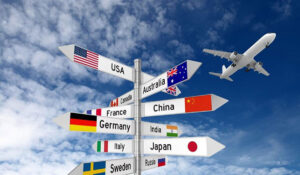
International tourism revenues rose 11% in the first quarter compared to the same period last year, to $1.7 trillion, the UN World Tourism Organization (UN Tourism) reported on Tuesday.
“We are seeing significant growth in tourism revenues across many destinations in early 2025. The average expenditure per international trip in 2024 was $1,170, which is almost 20% higher than the pre-pandemic average of $1,000,” the report said.
According to the organization, Spain, the world’s second-largest tourist destination, reported a 9% increase in tourism revenues in the first two months of 2025 (compared to the same period in 2024). In the Southern Mediterranean region of Europe, Turkey (+7%), Greece, Italy, and Portugal (all three countries saw 4% growth) showed good results in the first quarter. France recorded a 6% increase in international tourism revenues, Norway 20%, and Denmark 11%.
According to UN Tourism, the growth in tourism revenues in Asia was even more noticeable. In Japan, it amounted to 34% in the first quarter, in Nepal – 18%, in South Korea and Mongolia – 14% each.
The United States, which has the highest tourism revenues in the world, reported a 3% increase in January-March 2025.
“Revised data show that total international tourism export revenues (revenues and passenger transport) grew by 11% (in real terms) and reached a record US$2 trillion in 2024, which is about 15% higher than the pre-pandemic level. This is about 6% of total global exports of goods and services and 23% of global trade in services,” the report says.
According to UN Tourism, the growth in international tourism revenues in 2024 is linked to increased spending on overseas travel in the United Kingdom (+16% compared to 2023), Canada (+13%), the United States (+12%), Australia (+8%), and France (+7%). Travelers from China, the world’s largest spender on foreign tourism, spent 30% more abroad in 2024 than a year earlier and 3% more than before the pandemic.
Saudi Arabia (+17%), Spain (+14%), Belgium (+14%), the Netherlands (+13%) and Austria (+11%) also reported growth in travel spending.
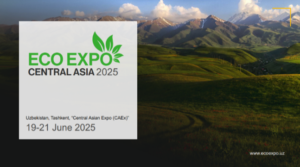
The Embassy of the Republic of Uzbekistan in Ukraine invites Ukrainian companies and interested organizations to PARTICIPATE in the largest international exhibition in Central Asia dedicated to ecology and sustainable development — ECO EXPO CENTRAL ASIA 2025, which will be held in Tashkent from June 19 to 21, 2025.
The exhibition will bring together global companies working in the field of eco-technologies, innovative start-ups, state and international organizations, and experts in sustainable development.
The industrial zones of the exhibition will cover 16 thematic areas, each reflecting key aspects of sustainable development.
These include greening, green finance and economy, ecotourism, Aral ecology, renewable energy, green construction, water and energy saving technologies, digital education and knowledge, sustainable agriculture, recycling and clean technologies, protected natural areas, green transport, green cities, ecological culture, artificial intelligence and ecology, as well as sustainable initiatives in the FMCG and retail sectors.
Each section will feature cutting-edge technologies, stands of leading companies and start-ups, and interactive simulations.
To register and receive additional information, please follow the link.
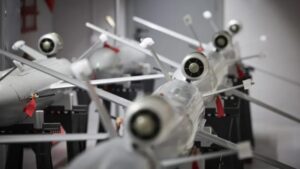
Industrial-scale production of long-range weapons can take place in both Ukraine and Germany, according to Chancellor Friedrich Merz.
“Today we have taken the first step in the right direction. I am referring to the production of long-range weapons between Ukraine and Germany. And this will be a cooperation. We are talking about industrial volumes. And this will happen, and can happen here and in Germany, that is, in Ukraine and Germany,” Merz said during a press conference with Ukrainian President Volodymyr Zelensky in Berlin on Wednesday.
The chancellor noted that Russia’s vacillation on the issue of negotiations would have consequences. “And we will implement these consequences every day,” he stressed.

JSC Scientific and Technical Complex (STC) Elektronprylad (Kyiv), almost 91.77% of whose shares are owned by the state, will pay dividends in the amount of UAH 21.152 million, or UAH 0.77 per share, based on the results of 2024.
According to the company’s report in the NSSMC’s information disclosure system, this decision was made by the company’s shareholders’ meeting on April 30.
The dividend payment period is from July 1 to October 30 of this year.
As stated in the draft minutes of the general meeting, 75% of the net profit received in 2024 will be allocated to the payment of dividends. Another 25% of net profit will be allocated to expenses provided for in the company’s financial plan.
The company does not disclose its net profit for 2024, but according to Clarity Project, it amounted to UAH 28.203 million (in 2023 – UAH 6.36 million). Net income doubled to UAH 345 million.
NTK Elektronprylad specializes in the creation of onboard aviation equipment for aircraft. The company was established in 1962 on the basis of the automated control systems of Antonov Design Bureau.
The authorized capital of NTK Elektronprylad is UAH 6.785 million, and the par value of a share is UAH 0.25.
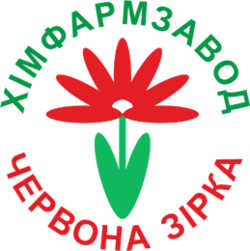
In January-March 2025, PJSC Khimpharmzavod Chervona Zirka (Kharkiv) increased its net profit by 66% compared to the same period in 2024, to UAH 6.144 million.
According to the company’s disclosure to the National Securities and Stock Market Commission, its net sales revenue for the period increased by 27% to UAH 100.558 million.
Chervona Zirka is a Ukrainian manufacturer of medicines, therapeutic cosmetics, and dietary supplements.
According to the OpenDataBot system, the company’s net profit for 2024 amounted to UAH 24.063 million, which is 64% more than in 2023.
The ultimate beneficiary of the company is Elena Galkina.